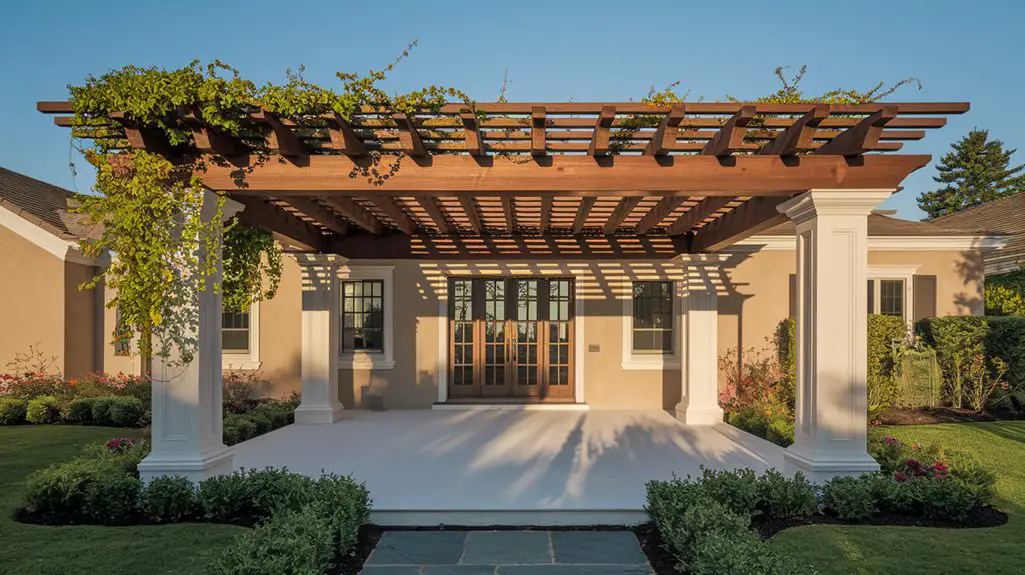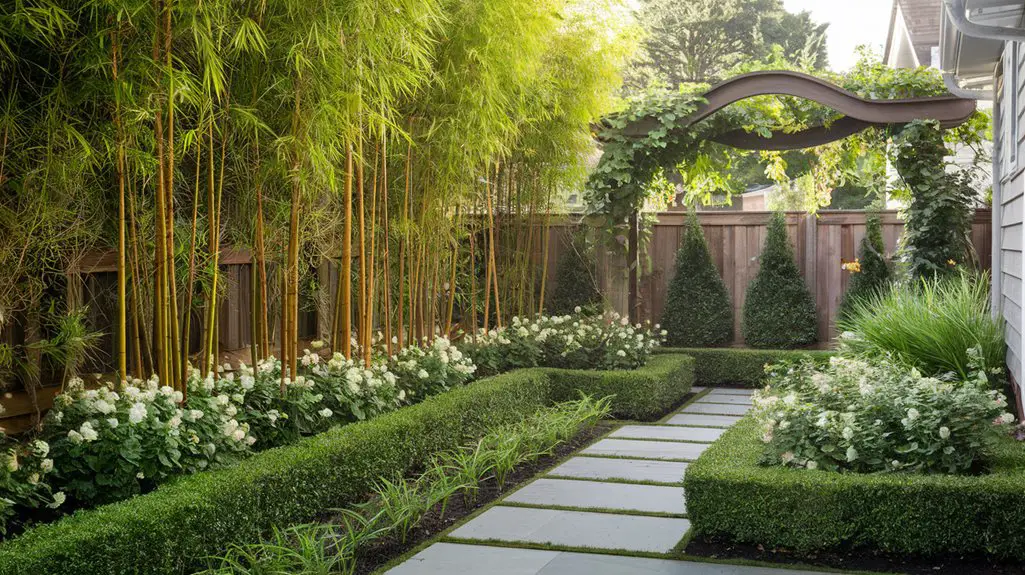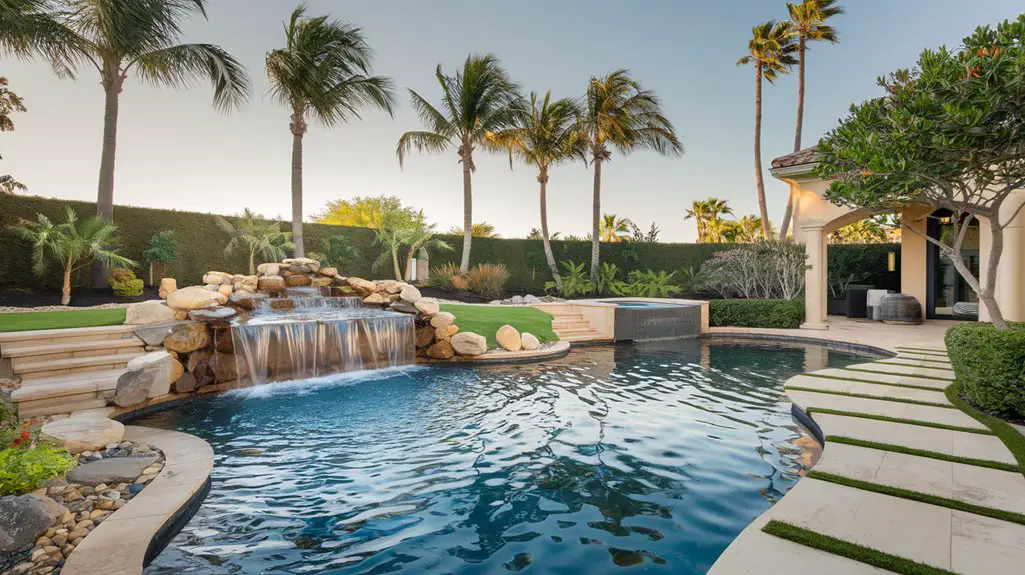When you're evaluating your home's exterior appeal, don't overlook the transformative power of a pergola. This architectural element creates visual depth, defines outdoor spaces, and establishes a natural connection between your home and landscape. You'll find pergolas serve as both functional structures and artistic statements that complement your property's existing aesthetic. Their versatility allows for customization through material selection, placement, and integrated features—all contributing to a more sophisticated and inviting curb presence.
Defining the Architectural Statement of Pergolas
When incorporated thoughtfully into your home's exterior design, pergolas serve as defining architectural statements that transcend mere functionality.
These open-air structures establish visual rhythm through parallel beams and create deliberate spatial shifts between indoor and outdoor environments.
You'll find pergolas amplify your home's existing architectural language—complementing Tudor details with ornate joinery or enhancing minimalist facades with clean, geometric lines.
The structure's proportions should harmonize with your home's scale, typically following the golden ratio for ideal aesthetic balance.
Consider material selection carefully: cedar offers warmth and natural resistance, powder-coated aluminum provides contemporary precision, while wrought iron conveys classical elegance.
Each material communicates distinct design intent and influences surrounding elements through shadow play, framing techniques, and negative space. Additionally, integrating functional outdoor kitchen designs into your pergola can enhance your outdoor living experience and increase overall enjoyment.
Strategic Placement for Maximum Visual Impact
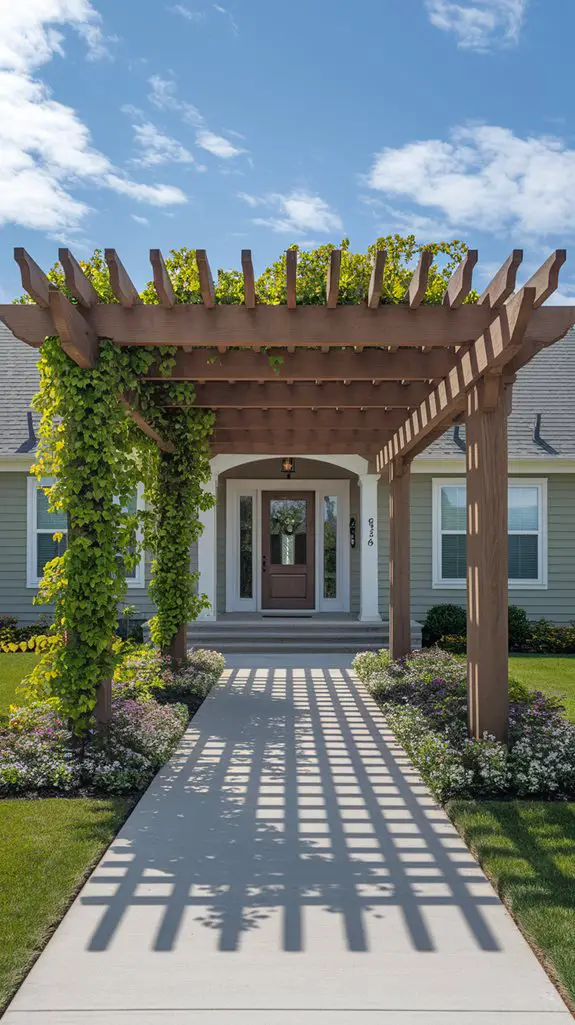
Beyond architectural details, the strategic positioning of your pergola fundamentally determines its visual potency within your property's overall composition. Consider sight lines from both street views and interior vantage points when selecting ideal placement.
| Placement Zone | Visual Impact | Functional Benefit | Design Consideration |
|---|---|---|---|
| Front Entrance | Frames home's façade | Creates welcoming shift | Scale proportional to entryway |
| Side Yard | Defines lateral boundaries | Connects distinct areas | Requires careful sight line planning |
| Rear Approach | Enhances depth perception | Extends living space outward | Height variations add dimension |
| Elevated Areas | Creates vertical interest | Maximizes views | Structural reinforcement critical |
Analyze your property's architectural rhythm and existing focal points before installation. The most effective pergolas serve as visual anchors that guide the eye through your landscape's narrative while creating purposeful negative space. Additionally, incorporating pergolas can enhance your outdoor experience, making it an ideal spot for outdoor gatherings with family and friends.
Complementary Plantings and Pergola Integration
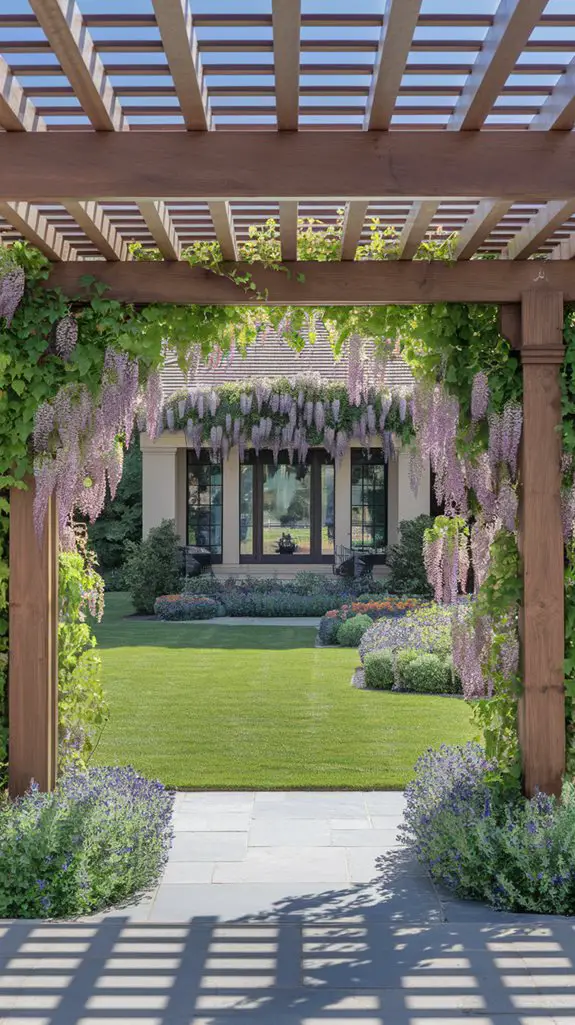
A carefully curated selection of plantings transforms a basic pergola structure into a living architectural statement that evolves throughout seasons.
Choose climbing varieties like wisteria, clematis, or jasmine that'll establish vertical interest while softening hard structural lines.
You'll want to reflect on growth rates and mature sizes when selecting plants. Fast-growing vines provide quick coverage but may require more aggressive pruning.
Integrate complementary container plantings at pergola bases to create visual anchors and shifting elements between your home's architecture and landscape.
For year-round appeal, incorporate evergreen climbers alongside deciduous varieties, ensuring sculptural interest even in winter months.
Don't overlook lighting opportunities—solar-powered options highlight plant textures after sunset, extending your pergola's visual impact into evening hours. Additionally, consider how vertical gardens can further enhance your outdoor space by utilizing unused vertical surfaces creatively.
Material Selection to Match Your Home's Aesthetic

The aesthetic harmony between your home's architectural character and pergola materials creates a cohesive visual narrative that enhances overall curb appeal. When selecting materials, analyze your home's dominant architectural elements, considering both structural composition and historical context.
| Home Style | Ideal Materials | Visual Integration |
|---|---|---|
| Colonial | Cedar, painted wood | Formal, symmetrical design |
| Craftsman | Rough-hewn timber, stone bases | Exposed joinery, tapered columns |
| Mediterranean | Wrought iron, stucco accents | Arched elements, terracotta integration |
| Modern | Steel, aluminum, composite | Clean lines, minimalist hardware |
For maximum design integrity, match pergola finishes to existing exterior elements—window frames, trim work, or decorative accents. The material's weathering characteristics must also align with your maintenance preferences, as untreated woods develop patina while metals and composites maintain consistent appearance with minimal intervention. Additionally, incorporating creative privacy fencing around your pool area can further elevate the overall aesthetic and functionality of your outdoor space.
Lighting Elements to Showcase Your Pergola After Dark
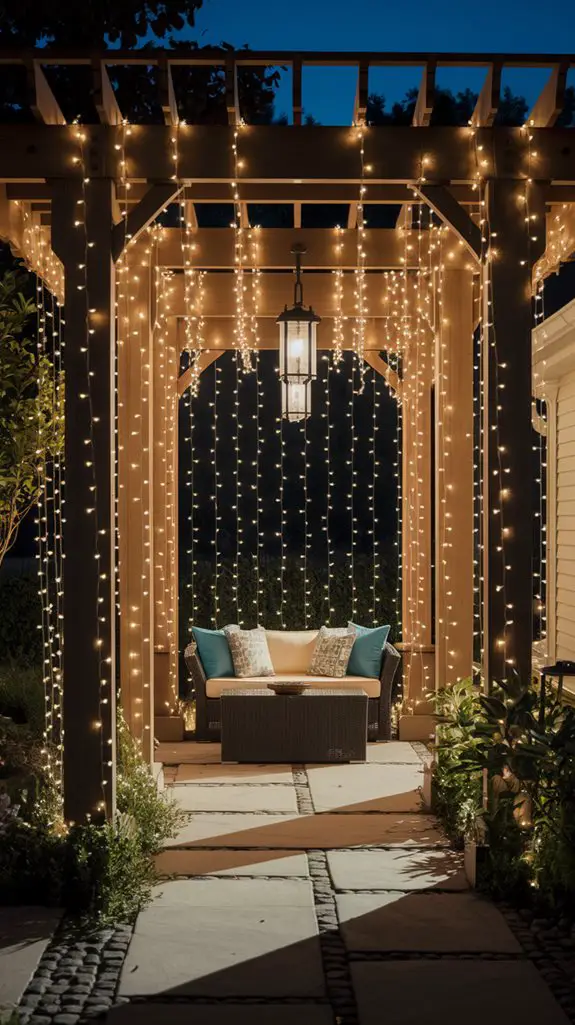
Strategic lighting transforms your pergola from a daytime architectural feature into a mesmerizing nighttime focal point that extends your home's visual presence beyond sunset hours.
Install low-voltage LED string lights woven through crossbeams for ambient illumination, or opt for recessed downlights mounted at beam intersections to create defined pools of light below.
Consider uplighting from ground-mounted fixtures to accentuate structural columns and cast dramatic shadows across the canopy.
Solar-powered post cap lights offer practical boundary definition while colorful backyard lighting ideas can enhance the festive atmosphere during celebrations.
Conclusion
Your pergola isn't merely an addition—it's a threshold between environments, symbolizing your home's shift from private to public domain. It establishes a visual rhythm through its precise geometry, drawing the eye's movement across your property's façade. When executed with meticulous material selection and strategic illumination, you'll transform your home's architectural narrative, elevating its exterior presence and creating a defined spatial hierarchy that distinguishes your property from surrounding structures.

